Reforming public health expenditure is crucial for Nigeria’s health policy goals, particularly in achieving Universal Health Coverage (UHC). This requires increased budget allocations and expenditure, and ensuring that available resources are efficiently and effectively utilized to improve healthcare delivery. However, persistent challenges in health financing continue to hinder progress toward sustainable health outcomes.
Recognizing these challenges, Development Governance International (DGI) Consult, with funding from the United Nations Children’s Fund (UNICEF), conducted a public health expenditure analysis across eight Nigerian states. The study was conducted in two phases, with the first four states being Katsina, Zamfara, Kebbi, and Jigawa.
The study assessed health budget allocations and expenditure patterns across program areas, spending distribution by level of care, and overall efficiency in resource utilization. It also assessed the effectiveness of the GAVI Primary Health Care (PHC) Memorandum of Understanding (MoU), signed in 2022 between GAVI and the eight state governments, in catalyzing increased government investment in the health sector.
To discuss the findings from this analysis, DGI Consult, in collaboration with UNICEF, convened a high-level stakeholder dissemination workshop in Kano State. The workshop brought diverse stakeholders together, including policymakers, health sector experts, development partners, and civil society organizations, who collectively reviewed the findings and discussed strategies for translating the recommendations into actionable reforms.
In the welcome address by UNICEF’s Health Specialist, Dr. Sachin Bhokare, he emphasized that the event is not just for data presentation but an opportunity to align priorities, renew states’ commitments, and take decisive actions to ensure that budget allocations translate into real, measurable improvements in health outcomes—especially for maternal, newborn, and child health. He urged the effective participation and contribution from stakeholders and participants.
Why Conduct Public Health Expenditure Analysis?
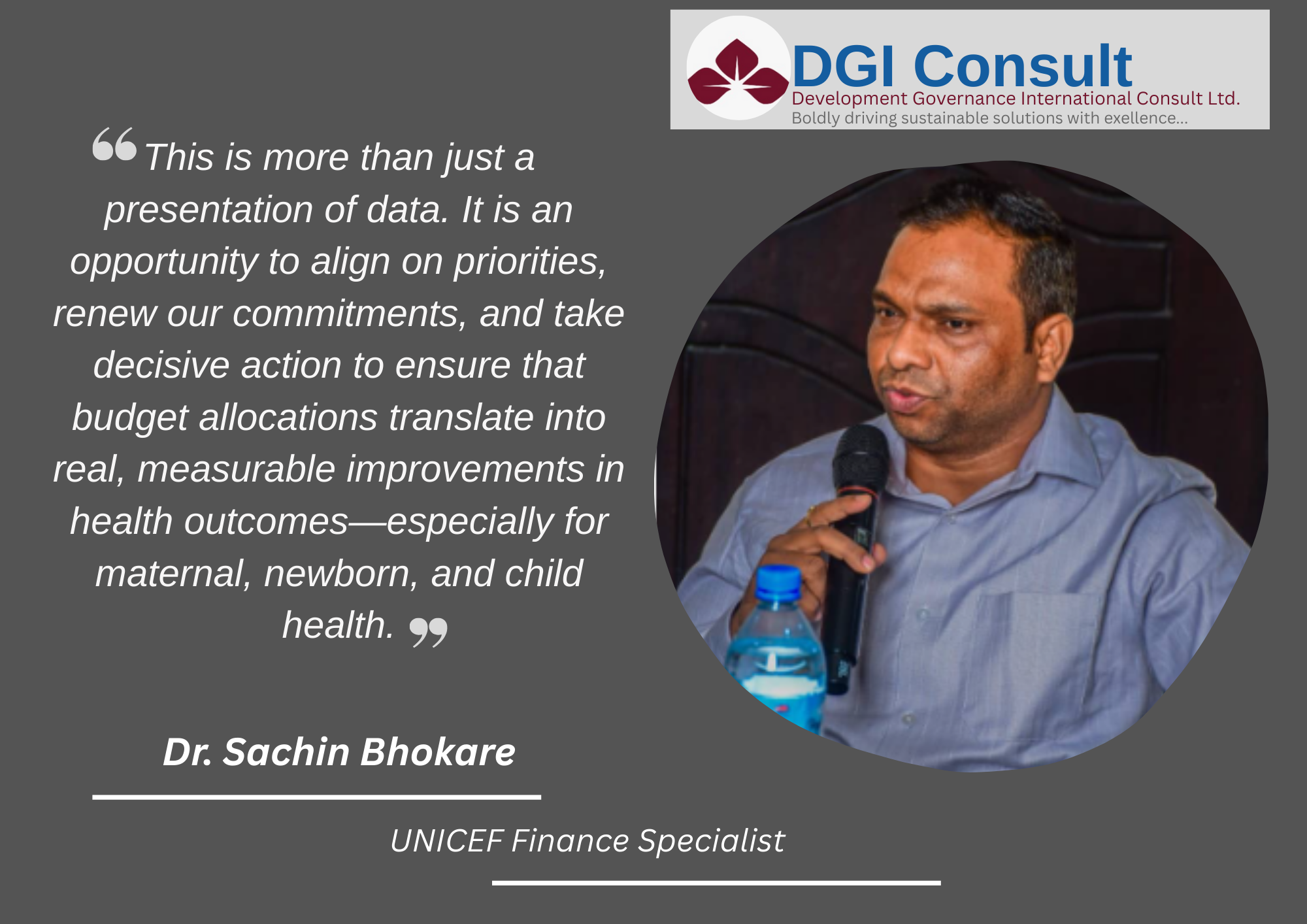
Dr Sachin Bhokare highlighted that the GAVI PHC MOU initiative, jointly implemented by the Federal Government of Nigeria, eight state governments, GAVI, and UNICEF, is focused on improving primary healthcare services across 100 Local Government Areas. Designed to enhance access, quality, and governance in the PHC space, the programme is anchored on seven strategic pillars: Leadership, management and coordination, Service delivery, Supply chain, Health management information system, Demand generation, Human resource for health, and Health financing. He noted that a 3-pronged health financing strategy was employed in the project. This includes evidence generation & advocacy, capacity building & training, and health financing interventions, including health insurance interventions in all 8 MOU States. Thus, the public health expenditure was conducted to generate evidence for advocacy for improved governments’ investment in the health sector.
His presentation was followed by a plenary session, allowing participants to provide feedback, seek clarification from the presenter, and provide input. The ALGON Chairman for Jigawa State encouraged local government chairmen to enrol at least 100,000 lives in their state social health insurance schemes to improve the health status of citizens. He assured that this will create employment and improve the quality of state health systems.
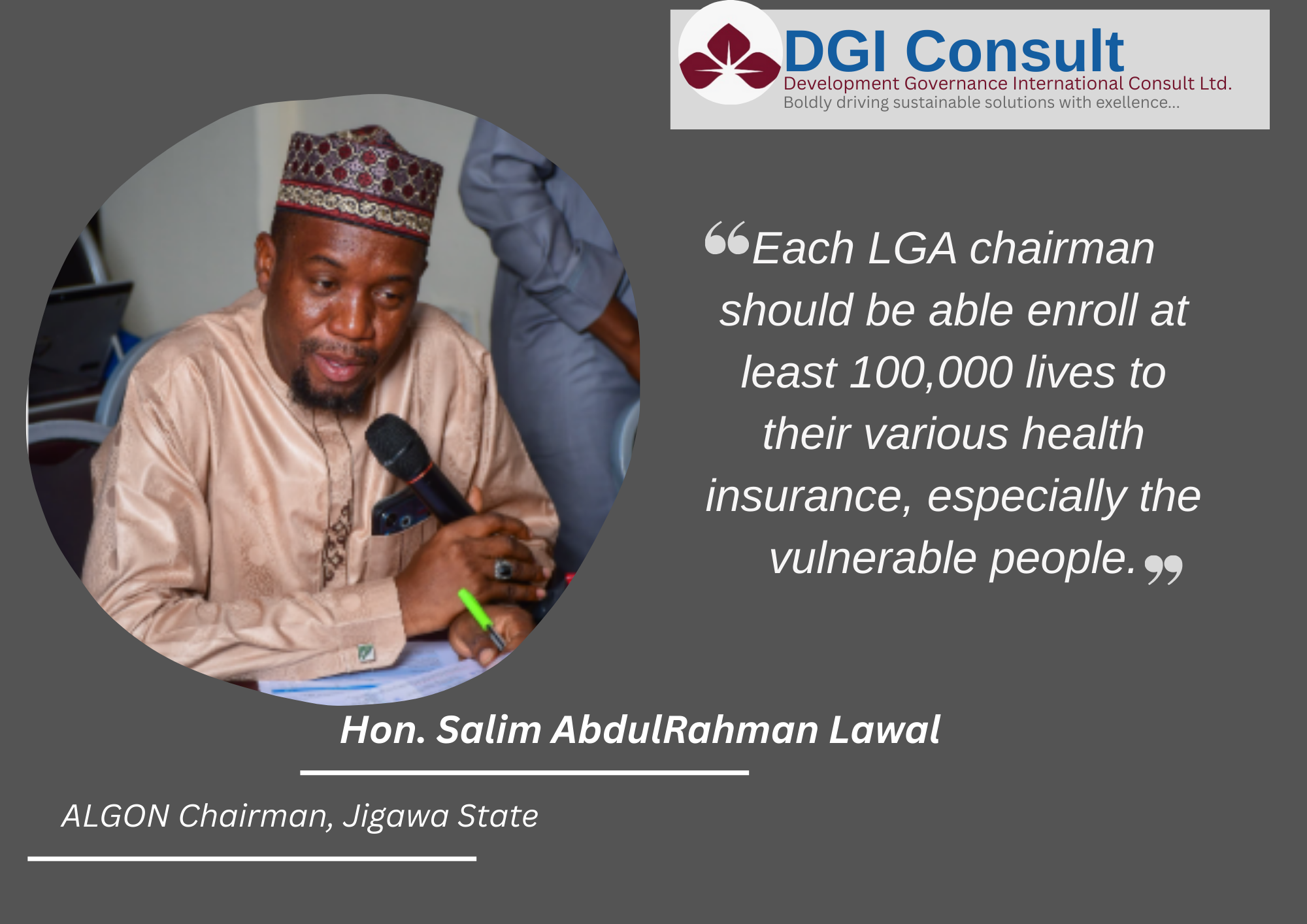
Public Health Expenditure Analysis Findings, Recommendations and Advocacy Points
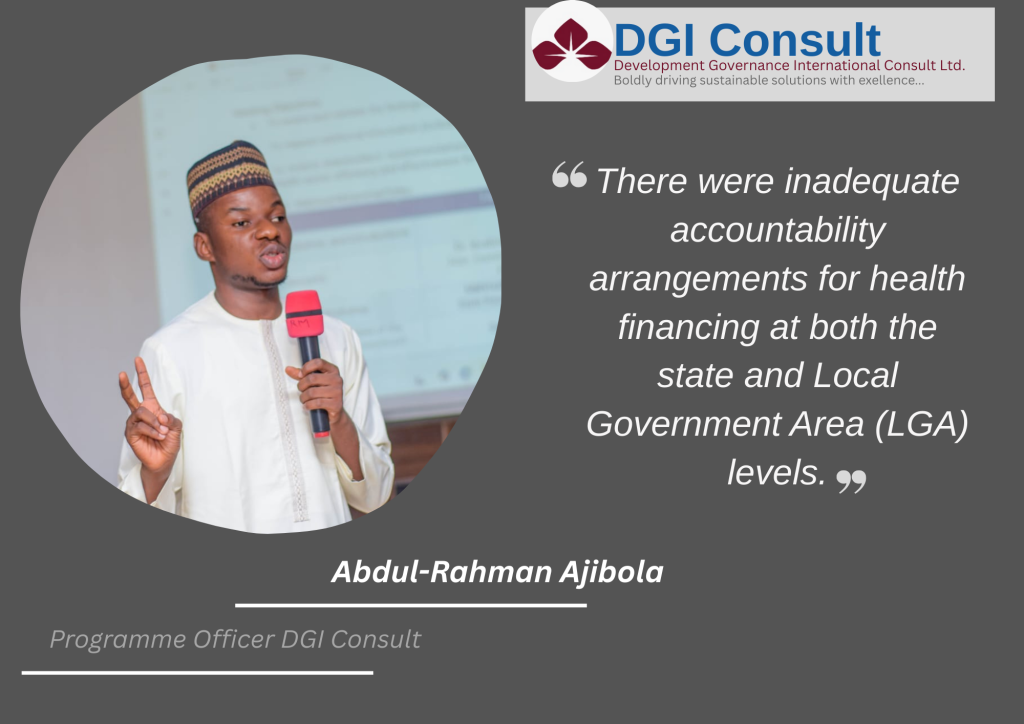
In the second presentation of the stakeholder engagement, Abdul-Rahman Ajibola, a Program Officer at DGI Consult, delivered the key findings from the public health expenditure analysis. The findings revealed increased health and PHC expenditure during the GAVI PHC-MOU implementation years. Similarly, health spending as a proportion of total state expenditure increased during the GAVI PHC-MOU implementation years. However, despite this increase, health spending as a proportion of total state expenditure
was below 15% in the years under review (2019–2023), except in Jigawa State in 2021 and 2023.
The analysis also revealed sub-optimal state government investment in primary healthcare across the states. In addition, there was limited institutional capacity for budget tracking and expenditure monitoring at the state and LGA levels. The study encountered difficulty in accessing health financing data (program areas) due to improper documentation at the state and LGA levels. It also observed the lack of a centralized health allocation and expenditure database at the LGA level. Furthermore, inadequate health financing accountability arrangements were observed at the state and LGA levels. At the LGA level, there was no evidence of the design of a robust health Annual Operational Plan (AOP) with effective implementation and monitoring.
Recommendations and Call to Action
Dr Gafar Alawode, the CEO of DGI Consult, presented the recommendations from the analysis. These include integrating PHC planning and budgeting from all sources into the State PHC Annual Operational Plan (AOP) and developing, implementing, and tracking AOPs at the Local Government Area (LGA) level. Dr Gafar also emphasized the need to capture relevant PHC-related program budgets in state and LGA budgets while leveraging LGA financial autonomy to enhance PHC funding. Furthermore, he called for increased transparency and community involvement, with an emphasis on enabling citizen participation in the budgeting, execution, and monitoring processes.
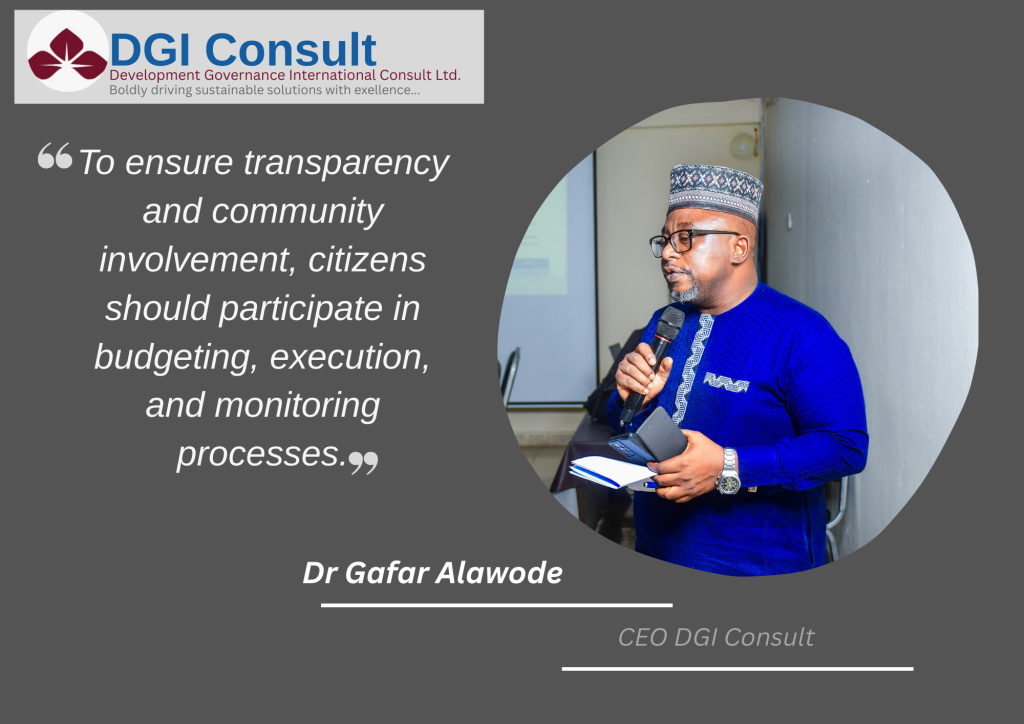
Lastly, he urged states to increase healthcare funding to meet the Abuja Declaration target of 15% and prioritize PHC financing in their budgets.
Translating Recommendations to Actions
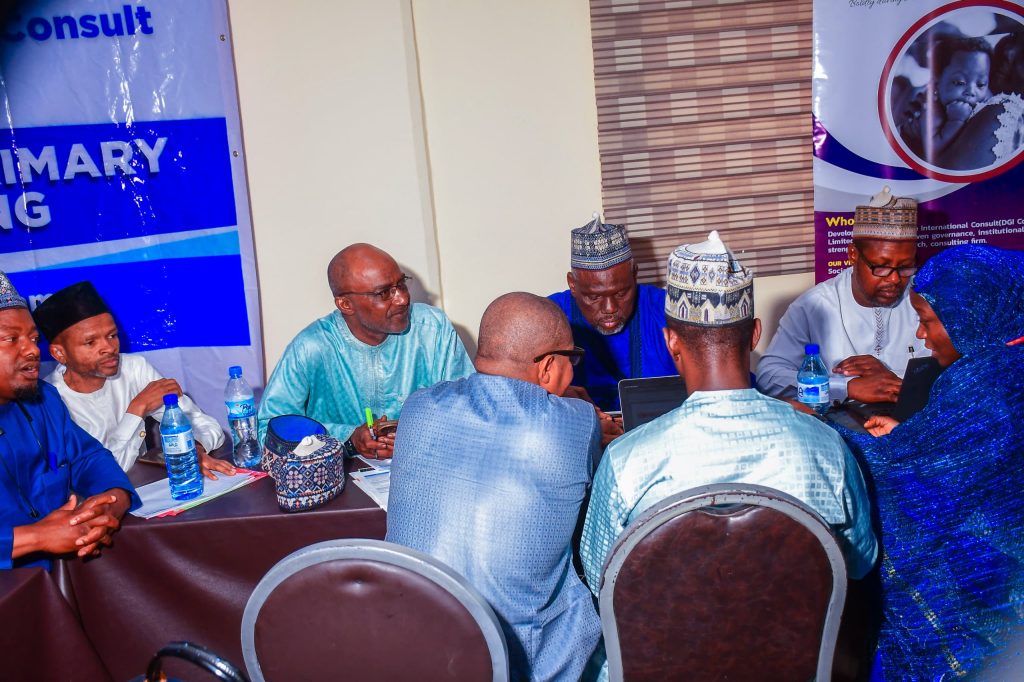
To operationalize the recommendations from the analysis, the stakeholders participated in state-specific group work, which allowed them to co-create prospective solutions to strengthen public healthcare financing and accountability. Overall, the session enabled each state group to align strategic goals with practical steps tailored to their specific contexts, toward improved health system performance.
What Next?
At the end of the workshop, stakeholders agreed that a policy memo should be developed to mandate transparency in partner budgets and expenditures within implementing states. Further, state governments were encouraged to implement the workshop’s recommendations, adopting the tailored action plans from their group work to drive continuous improvements in PHC financing and delivery.
Comments are closed.